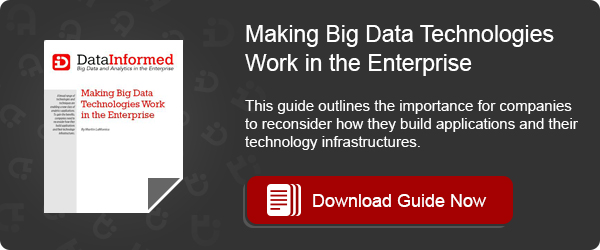
Brinqa?s risk analytics platform aggregates relevant data from multiple sources, computes an assessment of business risk based on domain-specific models, and then reports results to the analysts, managers, and IT staff.
Data, like people, has relationships. Each data point that your systems collect and store has its own context, which could include where it is stored, its source, the applications or tasks it is associated with, and its relevancy to other data. In the world of operational risk analytics?which is used to predict consequences of failures in compliance, people, processes, and systems? knowing that context can produce better results and allow the organization to take needed actions faster.
That contextual element is missing from many of the tools used for operational risk analytics, according to Amad Fida, CEO of Brinqa. Brinqa has been selling a risk analytics platform since 2009 that takes the correlations among the data into account.
?Splunk is a Google-style search tool that is very good at indexing machine data,? says Fida. ?It lets you define search terms and find data quickly. We?re more of a ?Facebook-style system where we have all the data, but are more focused on relationships?how a server is linked to an application or data center, who works on it, what vendors are coming in and working on that machine, what accounts exist on it, personal info stored, how an application supports a business function. It?s a big differentiator for us versus the indexed approach.?
Once implemented, Brinqa?s users?system and business analysts, management, auditors, and other stakeholders?have a dashboard view into key risk areas with an assessment of the impact on the business. That assessment is based largely on the correlation models that the organization builds into Brinqa. The modeling process allows you to bake your organization?s domain knowledge into the system and prioritize risk events based on the actual threat level to your business.
?Risk analysis presents some structural challenges that are not easy to address,? says Erik Heidt, research director, security and risk management strategies at Gartner. Well-known analytics wins such as identifying customer preferences work in part because the nature and source of the data is relatively consistent. With risk analytics, ?relationships [among the data] are constantly changing.?
Heidt sees operational risk analytics as an emerging market. ?There is a race to bring big data analytics into a security and risk platform,? he says, adding that most deployments now are by early adopters, particularly in the financial services industry where there is already a strong analytics culture.

Amad Fida, CEO of Brinqa
Fida cites the example of one of the largest banks in the US. ?They built a model with our help,? says Fida, ?aggregating data across 21 reporting areas so they can analyze each data point. Now they can prioritize.? Because each reporting area had its own rules and definitions for potential risks, the organization had no way to compare and prioritize across reporting areas. They had to assume each risk was significant. ?They were in reactive mode,? says Fida. ?They were spending time on issues that didn?t really matter to business, and it was costing millions annually. Now they have a single risk taxonomy defined.? As a result, they know the level of risk each threat presents and can allocate resources accordingly.
The Challenge of Standardizing Risk Models
While Brinqa?s platform might allow each organization to create its own risk models, there is no standard way to do so yet. ?A consistent, dominant model to provide risk analytics has yet to emerge in the market,? says Heidt, the Gartner analyst. When it comes to the language that defines risk in an organization and the acceptable boundaries, ?It?s not uncommon to have radically different values [within the same organization],? he says. ?It?s more about organizational change than technology.?
Aggregating relevant risk data from multiple sources and pulling it into the analytical engine would be a difficult task if you had to do it manually. Brinqa?s connector framework helps to automate the task. It includes connectors to remotely pull data from more than 100 data source types out of the box. Once set up, the connectors pull in only the data that has changed since the last import.
Brinqa also uses a graph database on the backend rather than a traditional relational database. ?A relational database management system is good if you know what you are expecting,? says Fida. ?Data aggregation problems occur historically because of the nature of data and multiple sources. How do you store that information when the target is changing constantly or you are discovering new sources with structures you didn?t anticipate? [With a relational database], you are doing 20 different joins because you got the data from all over the place.? With a graph database, he adds, you can enable additional columns and adapt without any performance hit or affecting records.
Heidt?s advice for success in building risk models regardless of the tools used is to have clearly defined objectives before you begin pulling in data and building reports. ?It?s very easy to get distracted,? he says. ?Risk projects often start on panic status. [The goal becomes] to report on everything without evaluating the value of the reporting.?
Michael Nadeau is publisher of Data Informed. Reach him at michael.nadeau@wispubs.com. Follow him on Twitter at @menadeau.
// ]]>
Source: http://data-informed.com/brinqa-were-the-facebook-of-machine-data-for-risk-security-analytics/
wes welker Conclave tmz Sizzurp the bachelor What is a Jesuit pi day
No comments:
Post a Comment
Note: Only a member of this blog may post a comment.